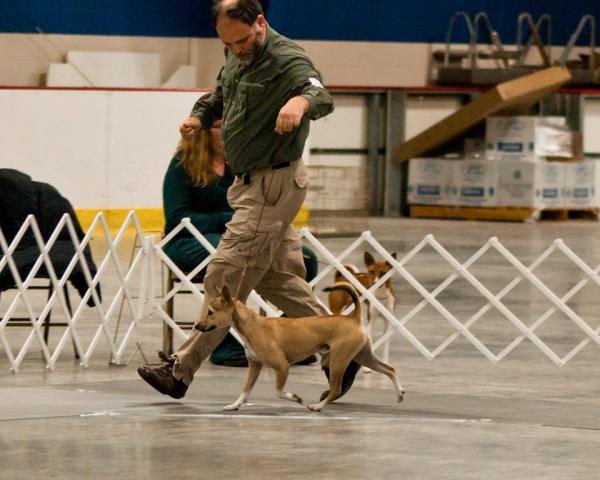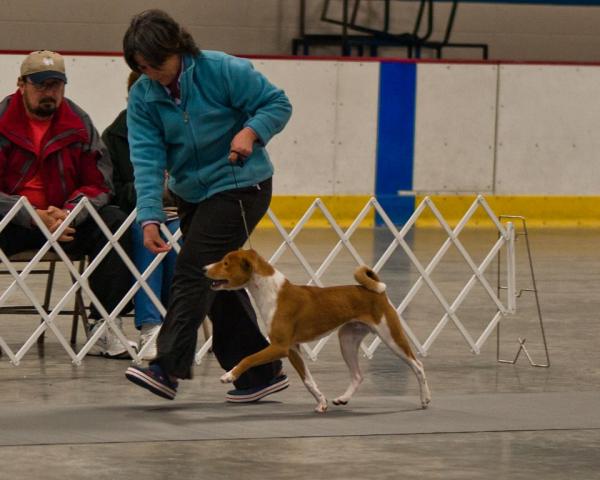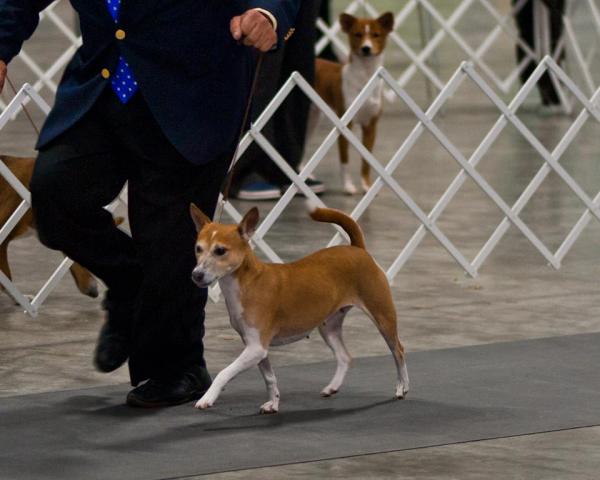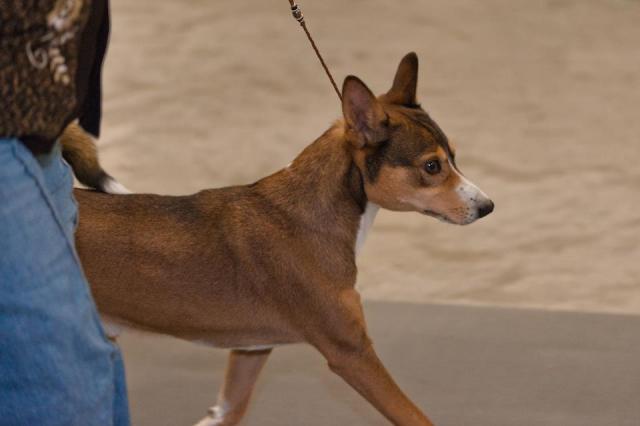Explanation
-
Hi Guys,
i came across a friends post on fb regarding some photos for "african stock exhibition".
Can someone explain what im looking at ?
To me they look like they have just been cross bred basenji's trying to get different features (eg colour, sizing).
Ill attach some photos i copied.
All i would like is an a bit of enlightenment :D
Thanks!! :)









-
The African Stock Exhibition is held at the BCOA National Specialty. It features dogs that are at least 1/4 African import stock up to fully import. I think most of the dogs in the photos are full African imports - I know at least 3 of them are for certain! You can see they tend to have tails that are much less curled than domestic bred dogs, most have a longer back and/or shorter legs. They're always much more obviously aware of their environment and, in general, seem to get along well with most other dogs.
Terry
-
Terry is right of course, these pics are from the Parade of African Imports. All of these dogs came directly from Africa. Four from the most recent Avongara trip (2011), one from the most recent Ntomba trip (2010), and two from prior Avongara trips. Most are not registered yet with AKC (except possibly Bernadette?) they may, or may not be submitted for inclusion in the studbook…but the parade gives people a chance to see the dogs in person, before they are asked to vote for their inclusion. Keep in mind that a picture may not do a dog justice; and these dogs were all a little nervous being in the ring with people clapping etc, especially the puppies!
So to answer your question more directly...this is a representation of what Basenjis look like when found in their natural state :) We don't add dogs from Africa to make better show dogs (for the most part) we add them in to increase our genetic diversity (if used correctly), and to ensure the survival of an ancient breed. No one expects that imported dogs are going to be competitve in the show ring, although occasionally some are! But we do expect that they conform to standard, which most of these dogs do...each may have faults, even significant faults, but that individual may produce beautiful puppies when bred the right partner.
-
I love looking at all the African stock pictures. Gives one a range of possibilities to imagine. The coloration of the last one you posted, for example (#8 and #9) is really striking to me, and I wonder what would happen to that color several generations down the line. Of course, I'm only noticing what's most obvious and visible. I have no idea how to account for the genetic potential, so it'll be interesting to see what breeders do with them.
-
I love the photos - I've seen 2 of the new Avongaras pictured above as baby puppies in person, so it is neat to see them more full grown.
I have a question based on Terry's post…can DNA testing reveal if a dog is brindle? Obviously I know nothing about DNA or genetics. ;)
-
This is a great group of dogs..and if accepted into basenji breeding will help the breed.
I don't know, do they have to be accepted into BCOA to be shown, or are they just showing off the imports they
have brought over -
I have seen that fourth dog in person and it is not dilute in the sense that most genetics people use the term. It does not have the opalescent quality to its coat that you see in dilutes. It may carry the dilute gene, that could be determined by genetic testing.
-
Yeah I like all of the dogs except pic number 7. For some reason that dog looks short on leg and I don't like the color of coat. Short in leg and high in rear. Dunno just don't like it. But the rest of them are beautiful. I love the chest on the 'odd' colored one beautiful dog.
-
Thank you for the information re this show. I loved looking at these dogs.
-
-
Show dogs have been line bred to get the look they have today. These dogs are what this breed was before that happened.
Or at least, that is my understanding.. -
Wow those dogs could not be any more different than what we currently hold as the breed standard. Some are very tall, some very short, some with perked ears some with floppy ears. All beautiful, just different from what usually see in the show ring.
I can attest that none of those dogs have floppy ears. The one I think you are referring to, was quite unhappy with the show collar and he was goofing around all over the place…but his ears definitely stand up.
